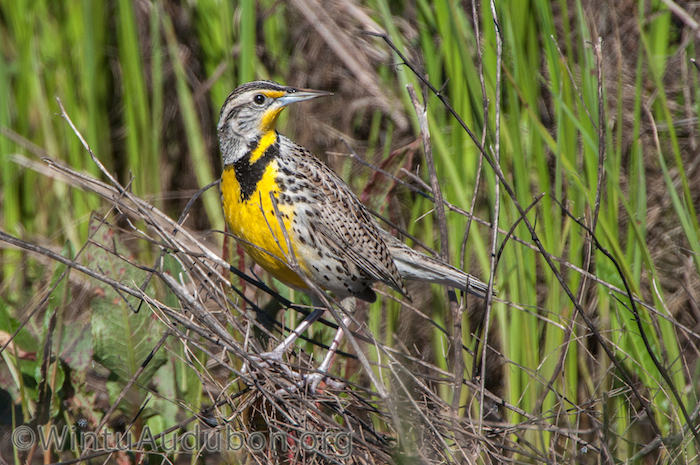
Last month I wrote about insect-eating birds swarming into Shasta County to raise their young. Unfortunately, I was indulging in a bit of optimistic nostalgia. The migration itself is as real as ever, but our nesting numbers are dismally down.
It can’t really be a surprise. Everything needs its habitat, and in actions that seemed reasonable, we have converted much wildland to more prosaic purposes. But the yellow-headed blackbird can’t nest where the marsh is drained, nor can the meadowlark make a home where grasslands are converted to row crops. The thrasher can’t sing where the chaparral is cut for houses, or the pet cat kills its young. The kestrel can’t nest where old woodpecker holes have been cut down to reduce hazards, and the pygmy owl can’t stalk grasshoppers where the woodland is paved into yet another retail center.
Driving up the valley as a kid it seemed there was a hawk on every telephone pole. But we reasonably want produce, and farmers pragmatically maximize their production. So after forty years of our plowing through the lairs of fieldmice, gophers, and snakes, of course the hawk numbers are down; after forty years of pesticides to kill hungry insects, of course the songbirds are reduced; after more recent advances to mow right to the fenceline, of course the hedgerow birds are gone.
Unfortunately, our personal perceptions of too-quiet treetops, empty telephone poles, and vacant fencelines are confirmed by research around the globe. Complementing the 115 year old Christmas Bird Count, the North American Breeding Bird Survey has run each May since 1966. It documents declines of 40-60% in a quarter of our birds, and up to 96%, depending on the species and region.
And that’s what has happened already. Now farm produce is being bio-engineered to withstand yet more pesticides, and their application has begun. Climate change is beginning to take its toll. At current carbon emission projections, 314 of 588 species studied by Audubon will lose at least half their seasonal habitat within the lifetime of this year’s graduates.
Many birds will face challenges as seasons unsynchronize: hummingbirds can’t sip on flowers that have already fruited, and fields gone dry offer fewer insects to bring to the nest. Some birds will be unable to shift northward as quickly as this climate change is demanding—especially if they need vegetation that moves north more slowly. Those who successfully shift will encroach on existing nesting grounds; ravens, which eat eggs and nestlings, are already increasing in the arctic, and invaded tundra birds have no Farther North to flee to.
As in most places, in Shasta County we have not, to my knowledge, lost any entire bird species in recent history. But the music is fainter, the voices fewer. Not so long ago, when the canaries started dying we recognized a problem and acted on it. We should be so wise and disciplined today.
